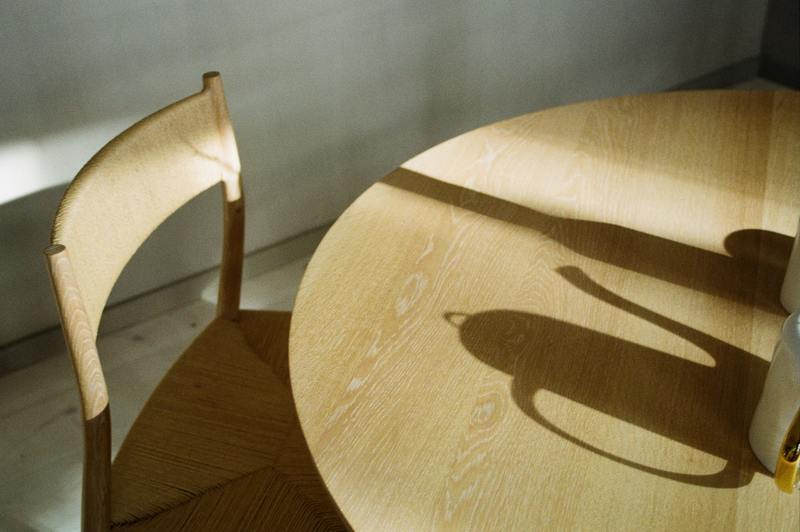Have you been looking for information about “how to refinish water damaged oak table”? The long search is over since this article will walk you through the process of repairing your oak table step by step!
Oak is the most remarkable wood for significant components like dining tables and kitchen work surfaces. It gets frustrating if oak furniture gets tarnished by water. Here, we have come up with the best solutions for refinishing your furniture.

Refinishing Water-Damaged Oak Table
Step #1. Dry the table
One famous method for repairing water-damaged wood furniture is to dry it before doing anything else entirely. However, instead of drying with an artificial approach such as a hair dryer or blower, you can evaporate the moisture by letting it rest in direct sunlight for at least 24 hours.
It’s important to remember that the furniture should dry completely, but not too rapidly, as the wood can shatter if it dries too quickly. To get a decent finish, you should take your time and be patient when drying it naturally.
Step #2. Repair the necessary parts
Start the repair by applying extra fasteners if necessary after thoroughly drying the furniture. Examine the sections that require additional support and can be moved back into position with minimal effort.
Nails, screws, bolts, expanded metal lathe and galvanized strips, wall plugs, pipe brackets, cable clips, frame fixes, and many other types of fastening are available. You can ensure a better version of your mended furniture by installing more fastening and repositioning timber that has migrated due to moisture movement.
Step #3. Use a sander
After the furniture has dried, you could choose to sand it with a belt sander and a finishing sander. The best finishing sander is ideal for when you want to achieve an ultra-smooth surface at the end.
The most powerful belt sander will do the fastest straightforward sanding, especially on top of your furniture tabletop. In contrast, the best finishing sander is ideal for when you want to achieve an ultra-smooth surface at the end. You might want to utilize both of these tools to restore ancient wood to its former glory for a fantastic finish.
Step #4. Apply marine-based polyurethane
Marine-based polyurethane is an exterior boat coating that protects the boat’s surface against water and sunshine. It’s also great for applying to indoor furniture, railings, tables, and counters where you don’t want white watermarks. It comes in both oil and water-based varieties and can provide adequate protection against water damage to wood.
For peeling water-damaged top
Any table with a peeling surface is likely veneer. Solid wood is impervious to peeling. It splits or cracks. If the surface coating has been weakened or worn off, direct water exposure or condensed moisture can start a veneered wood on any table to peel or deform.
Step #1. Sand the table’s surface using a hand block and 100-grit sandpaper by hand. Only sand parallel to the grain. Sand any loose threads that have coiled up or split from the table’s surface.
Step #2. To remove any debris, chips, or loose fibers that may have found their way under the veneer, use an air compressor with an air nozzle to spray air over the table. If some of them are stubborn and won’t come out, carefully scrape them out using the tip of a putty knife.
Step #3. Follow the manufacturer’s directions for mixing the powdered resin glue with water. Dip the putty knife’s tip into the glue. Allow the glue to scrape off the underside of any loose veneer pieces with the wet putty knife.
Step #4. To bind the loose piece, stretch a strip of masking tape over it and press down firmly. If the adhesive drips out, that’s fine.
Step #5. Take off all of the tapes. Sand the table’s surface with a hand block and 100-grit sandpaper until it is smooth, simply sanding parallel to the grain. Using the air nozzle, blow air over the table to remove any chips or debris.
Step #6. Dip the putty knife into a can of wood dough that has been opened. Use the resin glue to fill any fine cracks, small holes, or tiny pits or faults you may have overlooked.
With the hand block and 100-grit sandpaper, lightly sand the table once more. On the hand block, rub it again parallel to the grain with 180-grit sandpaper.
Step #7. With the air nozzle, spray the table until it is clean and dust-free. Lacquer should be filled into a one-quart pressure spray gun.
Hold the pistol at a 30-degree angle 8 inches from the table’s surface. Spray the table with overlapping bands of lacquer until it is evenly wet.
Conclusion
If the water-damaged furniture were made of poor quality, to begin with, the cost of repair would almost certainly be higher than the original purchase price. The majority of low-cost furniture cannot tolerate water damage.
That is why oak is at the top of the best wooden furniture list. If you have insurance, remember to file a claim before having the furniture repaired. Hopefully, we gave you all the necessary answers to your question on “how to refinish water damaged oak table.”
